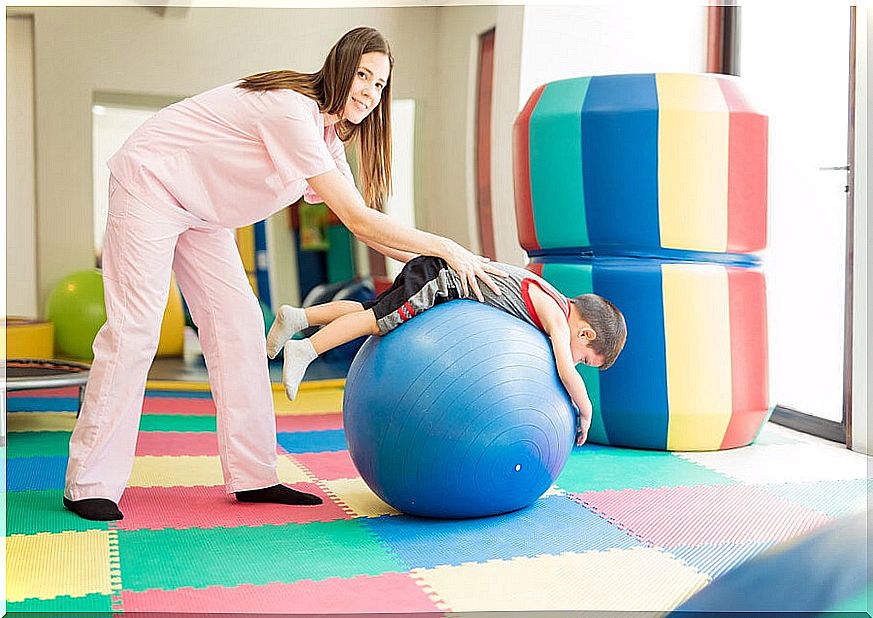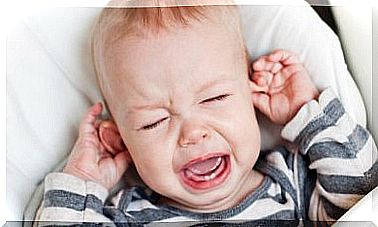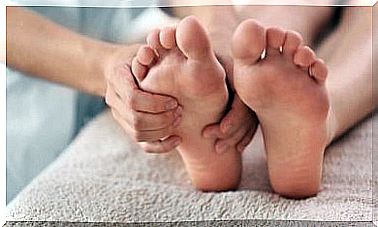What Is Pediatric Physical Therapy?
Pediatric physiotherapy is defined as a branch of health, specifically kinesiology and physiotherapy, in charge of children. He is dedicated to counseling, treating and caring for pediatric patients with developmental delays or movement disorders.
The definition can be broader, as we will see later, since other diseases related to kinesiology work can also benefit from it. Even the area of early stimulation also receives contributions from pediatric physiotherapy.
There are different synonyms for naming it, which adds to the confusion. However, it is not wrong to speak of infant kinesiology or infant physical therapy. In short, we are referring to the same professionals and the same health area.
Since its inception, although recent, the bulk of its attention has been directed to children with motor development problems who have the starting point in neurological pathologies. We can name, for example, cerebral palsy or congenital torticollis.
In second place of importance and volume of patients, we have traumatic pathologies, such as scoliosis or foot deformations. Respiratory diseases, such as asthma and cystic fibrosis, follow closely.
A broader definition of the area of action of pediatric physiotherapy suggests that any disease that limits the relationship between the environment and the child is treatable. This opens a range of opportunities for the discipline, since it goes beyond the classical limits of the pathological to encompass other aspects of existence.
For each area of action, pediatric physiotherapy proposes different approaches :
- Neuromotor stimulation.
- Respiratory physiotherapy.
- Psychomotor skills.
- Postural treatment.
- Functional bandage.
Beneficiaries of pediatric physiotherapy
As a pediatric health discipline, this physiotherapy is aimed at children. Here we can group the receptors into three well differentiated groups:
- Children and adolescents with various pathologies that generate developmental and motor consequences, with various origins:
-
- Neurological: spina bifida, cerebral palsy.
- Respiratory: asthma, cystic fibrosis, bronchiolitis.
- Skeletal muscle: congenital hip dislocation, plagiocephaly, achondroplasia.
- Genetic: Down syndrome, Wolf syndrome.
- Neuromuscular: Duchenne dystrophy, spinal muscular atrophy.
- Children who need follow-up because they are at high risk for developmental problems. It is a function of accompaniment of growth, to avoid major complications in the future.
- Children who do not have a specific pathology and for whom educational interventions are proposed, especially as a preventive measure.

Roles of the pediatric physical therapist
Pediatric physical therapy is not the application of traditional adult kinesiology to a smaller body. The child physiotherapist must be specialized in that age to be able to provide their service correctly.
Generally, the professional will carry out an initial assessment of the child or adolescent to evaluate it. It will establish the motor, cognitive, sensory and environmental scopes of the patient to know the reality of the person in the context in which they live and develop.
Once the evaluation is established, the professional will outline the objectives of a possible treatment. The objectives are usually agreed between the physiotherapist and the family, in addition to the treating physician, who is usually the one who requested the practice.
Based on the objectives, a work plan will be established. The professional training will allow you to choose the most appropriate techniques for each patient, always with the combination of the game. The playful aspect is a fundamental pillar of pediatric physiotherapy.
Once the treatment itself is underway, in successive sessions, coordination between the family and the professional is vital. That is why we speak of direct interventions, when they are carried out by the physiotherapist, and indirect interventions, when it is the family who executes them.

The role of the family
The child’s family in pediatric physiotherapy treatment is one more component of the approach. This discipline cannot be understood without the active participation of adults who spend most of their time with the patient.
It must be understood that the professional only meets the child or adolescent during the sessions, but the rest of the time is spent with the adults who make up their family. Thus, part of the success of the treatments depends on the persistence and involvement of the parents.
After the direct interventions of the physiotherapist on the patient, the indirect interventions are continued, which are those carried out by family members at home. These, advised by the professional, continue with the work plan.
The same discipline suggests that the family is the protagonist. Even more important is that prominence in the first years of life, where early stimulation will sow the seeds for future development, until adulthood.
It is essential, then, that communication and understanding between the physiotherapist and parents are fluent. Both parties should be in agreement and comfortable. Ultimately, the greatest good they pursue resides in the child who must be treated.









